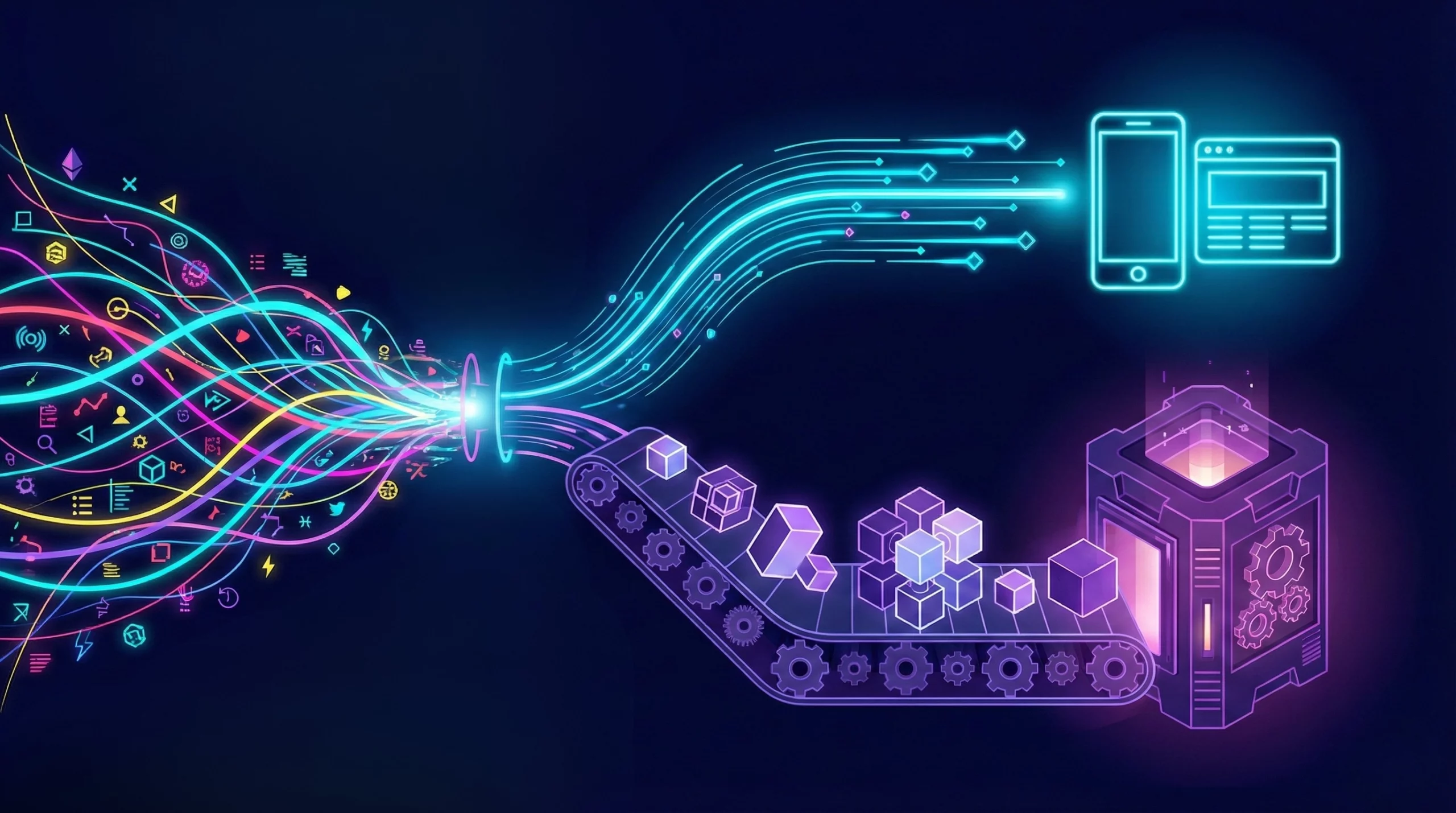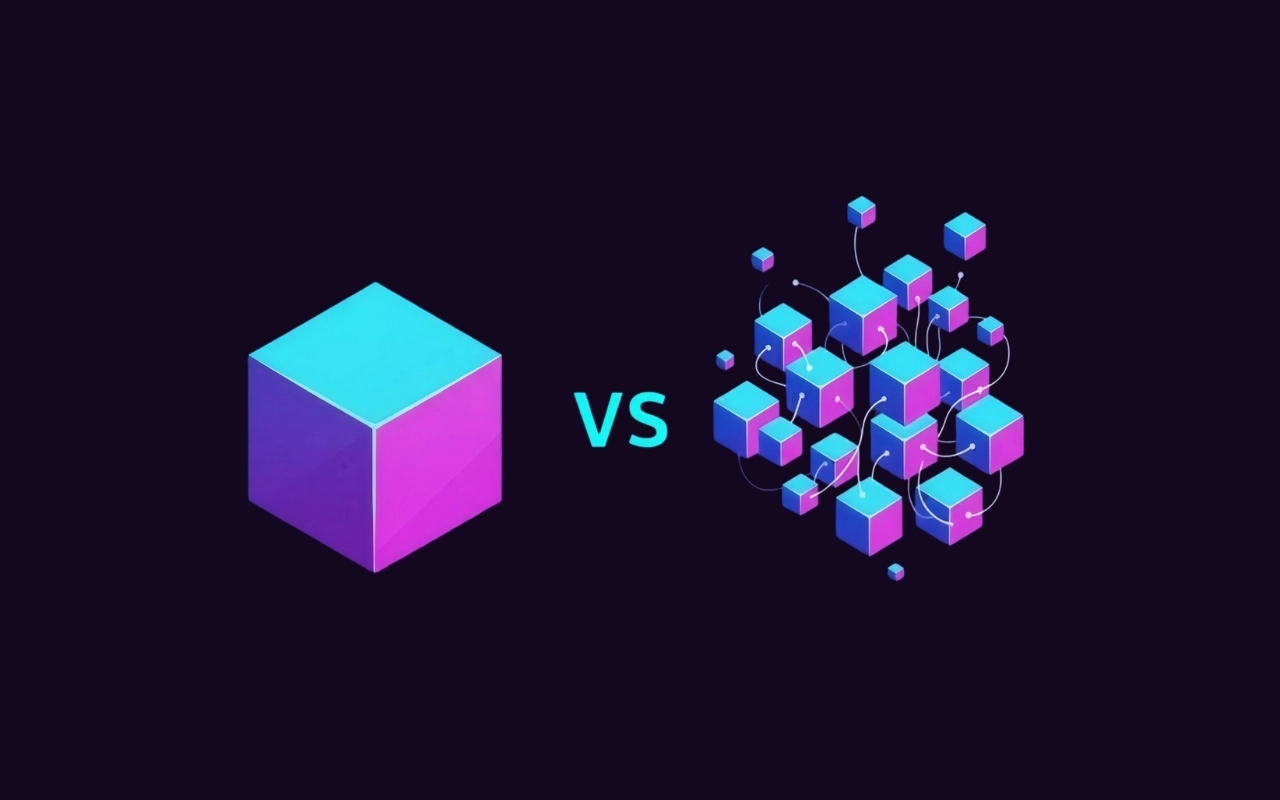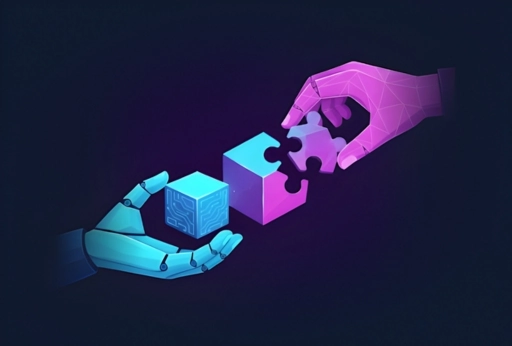Have you ever found yourself mulling over whether to use workflows or agents in your development projects?
You’re not alone.
Workflows and agents are two powerful tools in a developer’s arsenal, each with its own strengths and ideal use cases. And choosing the right approach can make or break your project’s efficiency and success. But how do you know which one to use and when?
Don’t worry – In this blog post, we’ll dive deep into the world of workflows and agents, exploring their unique characteristics, advantages, and best-suited scenarios. We’ll start by understanding agentic systems and the fundamental differences between workflows and agents. Then, we’ll examine the benefits of each approach and provide real-world examples to illustrate when to use one over the other. By the end, you’ll have a clear roadmap for choosing between workflows and agents.
Understanding Agentic Systems
Agentic systems have revolutionized the way we approach software development, offering flexible and intelligent solutions to complex problems. These systems are designed to act autonomously or semi-autonomously, making decisions and performing tasks based on predefined rules or learned behaviors. Understanding agentic systems is crucial for developers looking to optimize their development processes and create more efficient, adaptive software solutions.
Two types of Agentic Systems – Workflow and Agents
When discussing agentic systems in development, it makes more sense to categorize them as two types: workflows and agents. Each has its unique characteristics and applications, making them suitable for different scenarios in the development process.
| Feature | Workflows | Agents |
|---|---|---|
| Structure | Predefined sequence of tasks | Autonomous decision-making entities |
| Flexibility | Fixed, follows a set path | Adaptable, can respond to changes |
| Complexity | Typically simpler to implement | Can be more complex, requiring AI/ML |
| Control | High level of control over process | More autonomy, less direct control |
| Scalability | Scales well for repetitive tasks | Scales well for diverse, dynamic tasks |
Workflows are structured, predefined sequences of tasks that guide a process from start to finish. They excel in scenarios where:
- Tasks follow a consistent, repeatable pattern
- There’s a need for high visibility and control over the process
- Compliance and standardization are crucial
Agents, on the other hand, are more autonomous entities capable of making decisions and adapting to changing conditions. They are particularly useful when:
- Flexibility and adaptability are required
- Complex decision-making is involved
- There’s a need to handle diverse, unpredictable scenarios
Now that we’ve established the basic differences between workflows and agents, let’s explore their specific advantages in development contexts.
Understanding Workflows and Agents
Definition and key features of Workflows
Workflows are structured, predefined sequences of tasks or activities designed to achieve specific business objectives. They provide a systematic approach to organizing and automating processes within an organization or development environment.
Key features of workflows include:
- Sequential or parallel execution of tasks
- Predefined rules and decision points
- Standardization of processes
- Visual representation (often through flowcharts)
- Automation capabilities
| Workflow Characteristic | Description |
|---|---|
| Structure | Predefined sequence of tasks |
| Flexibility | Limited, follows predefined paths |
| Control | Centralized, managed by system |
| Scalability | Easily scalable for repetitive tasks |
Definition and key features of Agents
Agents are autonomous software entities capable of perceiving their environment, making decisions, and taking actions to achieve specific goals. They operate independently and can adapt to changing circumstances without constant human intervention.
Key features of agents include:
- Autonomy and proactivity
- Reactivity to environmental changes
- Goal-oriented behavior
- Learning and adaptability
- Ability to communicate and collaborate
| Agent Characteristic | Description |
|---|---|
| Structure | Flexible, adaptive behavior |
| Flexibility | High, can handle unpredictable scenarios |
| Control | Decentralized, distributed decision-making |
| Scalability | Complex for large-scale systems |
Architectural differences between workflows and agents
The architectural differences between workflows and agents stem from their fundamental design philosophies:
- Control flow:
- Workflows: Centralized, predetermined paths
- Agents: Decentralized, emergent behavior
- Decision-making:
- Workflows: Based on predefined rules
- Agents: Dynamic, based on current state and goals
- Adaptability:
- Workflows: Limited, requires manual updates
- Agents: High, can learn and evolve
- Interaction model:
- Workflows: Typically sequential or parallel execution
- Agents: Complex interactions, potential for emergent behavior
These architectural differences influence when and how each approach is best applied in development scenarios.
Advantages of Using Workflows in Development
Streamlining complex processes
Workflows excel at breaking down complex processes into manageable steps, making them ideal for streamlining development tasks. By defining clear sequences and dependencies, workflows can significantly reduce bottlenecks and improve efficiency.
Enhancing collaboration and communication
One of the key advantages of workflows is their ability to facilitate seamless collaboration among team members. They provide a structured framework for communication, ensuring that everyone is on the same page and aware of their responsibilities.
Improving project visibility and tracking
Workflows offer unparalleled visibility into project progress, allowing stakeholders to track tasks, identify bottlenecks, and make data-driven decisions. This transparency is crucial for effective project management and timely delivery.
Ensuring consistency and reducing errors
By standardizing processes, workflows help maintain consistency across projects and reduce the likelihood of human errors. This is particularly beneficial in development, where consistency is key to producing high-quality code.
| Advantage | Description | Impact on Development |
|---|---|---|
| Process Streamlining | Breaks down complex tasks | Increases efficiency |
| Enhanced Collaboration | Facilitates communication | Improves team productivity |
| Project Visibility | Provides clear progress tracking | Enables better decision-making |
| Consistency | Standardizes processes | Reduces errors and improves code quality |
Key benefits of using workflows in development:
- Clearly defined steps and responsibilities
- Improved resource allocation
- Easier identification of bottlenecks
- Enhanced quality control measures
- Better alignment with project goals and timelines
Now that we’ve explored the advantages of workflows, let’s examine the benefits of implementing agents in development to understand when each approach is most effective.
Benefits of Implementing Agents in Development
Automating repetitive tasks
Agents excel at automating repetitive tasks in development, freeing up developers to focus on more complex and creative aspects of their work. By implementing agents, teams can:
- Reduce human error in routine processes
- Increase productivity by handling time-consuming tasks
- Ensure consistency in repetitive operations
Here’s a comparison of manual vs agent-automated task completion:
| Task | Manual Completion | Agent Automation |
|---|---|---|
| Code formatting | Time-consuming, inconsistent | Quick, consistent |
| Dependency updates | Often overlooked, security risks | Regular, timely updates |
| Testing | Prone to human error, time-intensive | Continuous, thorough |
Enhancing system responsiveness
Agents can dramatically improve system responsiveness by:
- Monitoring system performance in real-time
- Triggering immediate actions based on predefined conditions
- Adapting to changing environments without human intervention
Enabling distributed problem-solving
One of the key benefits of agents is their ability to facilitate distributed problem-solving. This approach allows for:
- Parallel processing of complex tasks
- Efficient resource allocation across systems
- Improved fault tolerance and system reliability
Facilitating scalability and flexibility
Agents provide unparalleled scalability and flexibility in development environments. They achieve this by:
- Dynamically adjusting to workload changes
- Easily integrating with existing systems
- Allowing for modular development and deployment
With these benefits, agents prove to be invaluable in modern development processes, especially for projects requiring high adaptability and efficiency. Next, we’ll explore specific scenarios where workflows are the preferred choice in development.
Scenarios Best Suited for Workflows
Large-scale project management
Large-scale project management is an area where workflows truly shine. They provide a structured approach to handling complex projects with multiple stakeholders, tasks, and dependencies. Here’s why workflows are ideal for this scenario:
- Clarity and Visibility: Workflows offer a clear visual representation of the project’s progress, making it easier for team members and stakeholders to understand the current status and next steps.
- Task Delegation: Workflows enable efficient task assignment and tracking, ensuring that responsibilities are clear and deadlines are met.
- Resource Allocation: By mapping out the entire project, workflows help in better resource allocation and capacity planning.
| Workflow Benefit | Description |
|---|---|
| Transparency | Provides a clear overview of project status |
| Accountability | Assigns tasks and responsibilities explicitly |
| Efficiency | Streamlines processes and reduces bottlenecks |
Cross-functional team coordination
Workflows excel in coordinating efforts across different departments or teams. They provide a common platform for various functional areas to collaborate effectively:
- Standardize communication channels
- Define handoff points between teams
- Establish clear approval processes
Compliance and regulatory processes
In industries with strict regulatory requirements, workflows are invaluable. They ensure:
- Consistent adherence to compliance standards
- Proper documentation of all processes
- Audit trails for regulatory inspections
Change management and approvals
Workflows streamline the change management process by:
- Defining clear approval hierarchies
- Documenting each stage of the change process
- Ensuring all necessary stakeholders are involved
Quality assurance and testing procedures
For QA and testing, workflows provide:
- Structured test case execution
- Defect tracking and resolution processes
- Integration with CI/CD pipelines for automated testing
By implementing workflows in these scenarios, development teams can significantly improve their efficiency, transparency, and overall project outcomes. Next, we’ll explore the ideal use cases for agents in development.
Ideal Use Cases for Agents
Real-time data processing and analysis
Agents excel in scenarios requiring rapid, intelligent processing of large data streams. Their ability to autonomously analyze and act on information makes them ideal for:
- Financial trading systems
- Network traffic monitoring
- Social media sentiment analysis
| Use Case | Description |
|---|---|
| Stock market | Real-time price fluctuation analysis |
| Cybersecurity | Instant threat detection and response |
| IoT networks | Immediate sensor data interpretation |
Intelligent system monitoring and maintenance
Agents can continuously monitor complex systems, identifying issues and initiating corrective actions without human intervention:
- Self-healing IT infrastructures
- Predictive maintenance in manufacturing
- Autonomous vehicle diagnostics
Personalized user experiences
By learning from user interactions and adapting in real-time, agents can create highly tailored experiences:
- AI-powered personal assistants
- Dynamic content recommendation engines
- Adaptive learning platforms
Autonomous decision-making in complex environments
Agents shine in situations requiring split-second decisions based on multiple variables:
- Autonomous vehicles navigation
- Robotic surgery assistance
- Disaster response coordination
These use cases leverage agents’ ability to process information, learn from experiences, and make informed decisions in dynamic environments. As we explore the factors to consider when choosing between workflows and agents, it’s crucial to evaluate the complexity and real-time requirements of your project.
Factors to Consider When Choosing Between Workflows and Agents
A. Project complexity and scale
When deciding between workflows and agents, the complexity and scale of your project play a crucial role. Here’s a comparison to help you understand:
| Project Aspect | Workflows | Agents |
|---|---|---|
| Simple tasks | Ideal | Overkill |
| Complex processes | Can handle, but may become unwieldy | Excel |
| Large-scale systems | May struggle with coordination | Thrive |
| Data processing | Efficient for predefined paths | Adaptable to varying data |
For smaller projects with straightforward processes, workflows often suffice. However, as complexity increases, agents become more appealing due to their ability to handle intricate decision-making and adapt to changing environments.
B. Required level of autonomy
The level of autonomy needed in your system is another critical factor:
- Workflows: Best for processes requiring minimal independent decision-making
- Agents: Excel when high levels of autonomy are necessary
Agents can make decisions based on their environment and learned experiences, making them suitable for scenarios where flexibility and adaptability are key.
C. Integration with existing systems
Consider how well each approach integrates with your current infrastructure:
- Workflows often integrate seamlessly with traditional systems
- Agents may require additional middleware or custom integration solutions
- Existing APIs and data structures can influence the choice
D. Resource availability and constraints
Resource considerations include:
- Development time
- Team expertise
- Computational power
- Budget limitations
Workflows typically require less specialized knowledge and can be faster to implement. Agents, while potentially more powerful, may demand more resources and expertise.
E. Long-term maintainability and scalability
Finally, think about the future of your project:
- Workflows: Easier to maintain but may become complex as they grow
- Agents: More challenging to set up initially but often more scalable in the long run
Agents can adapt to changing requirements, potentially reducing the need for major overhauls as your project evolves.
Making the Right Call
Choosing between workflows and agents in development ultimately depends on the specific requirements of your project. Workflows excel in structured, predictable processes where step-by-step execution is crucial. They offer better control, visibility, and are ideal for scenarios requiring human intervention. On the other hand, agents shine in complex, dynamic environments where autonomous decision-making and adaptability are paramount.
To make the best choice, consider factors such as the nature of your tasks, the level of autonomy required, scalability needs, and the complexity of your system. Remember, these approaches are not mutually exclusive. In many cases, combining workflows and agents can lead to optimal results, leveraging the strengths of both to create more efficient and robust development solutions. By carefully evaluating your project’s needs and understanding the strengths of each approach, you can select the most effective tool or combination to drive your development process forward.




